The History of Military T-Shirts: From Navy Underwear to Fashion Icon
Explore the history of military T-shirts, from their origins as Navy undershirts to becoming global fashion icons symbolizing strength, service, and style.
Blog Post Contents
Every t-shirt in your closet traces back to a 1905 U.S. Navy decision. That standard-issue white undershirt transformed from strict military regulation into the world's most popular garment worn by billions today.
The history of military t-shirts reveals how practical military clothing became global fashion through necessity, cultural shifts, and innovation. Understanding the origin of veteran shirts connects military function to civilian style through four major transformations.
This guide explains how military shirts became popular by exploring key turning points: military adoption creating the foundation, post-war necessity normalizing civilian wear, cultural movements adding symbolic meaning, and fashion commercialization making military style mainstream.
Military Origins: The Foundation (1905-1945)
U.S. Navy Creates the Modern T-Shirt
The U.S. Navy officially adopted t-shirts in 1905, making them standard issue by 1913. Navy specifications were simple: white cotton, crew neck, short sleeves. These practical undershirts solved real problems for sailors.
Traditional wool undergarments caused misery in warm climates. Cotton t-shirts absorbed sweat, dried quickly, and allowed easy movement during physical labor. The lightweight design made shipboard laundry manageable where freshwater was precious.
This marked the true origin of veteran shirts as standardized military issue. For the first time, t-shirts became regulation military wear rather than improvised undergarments.
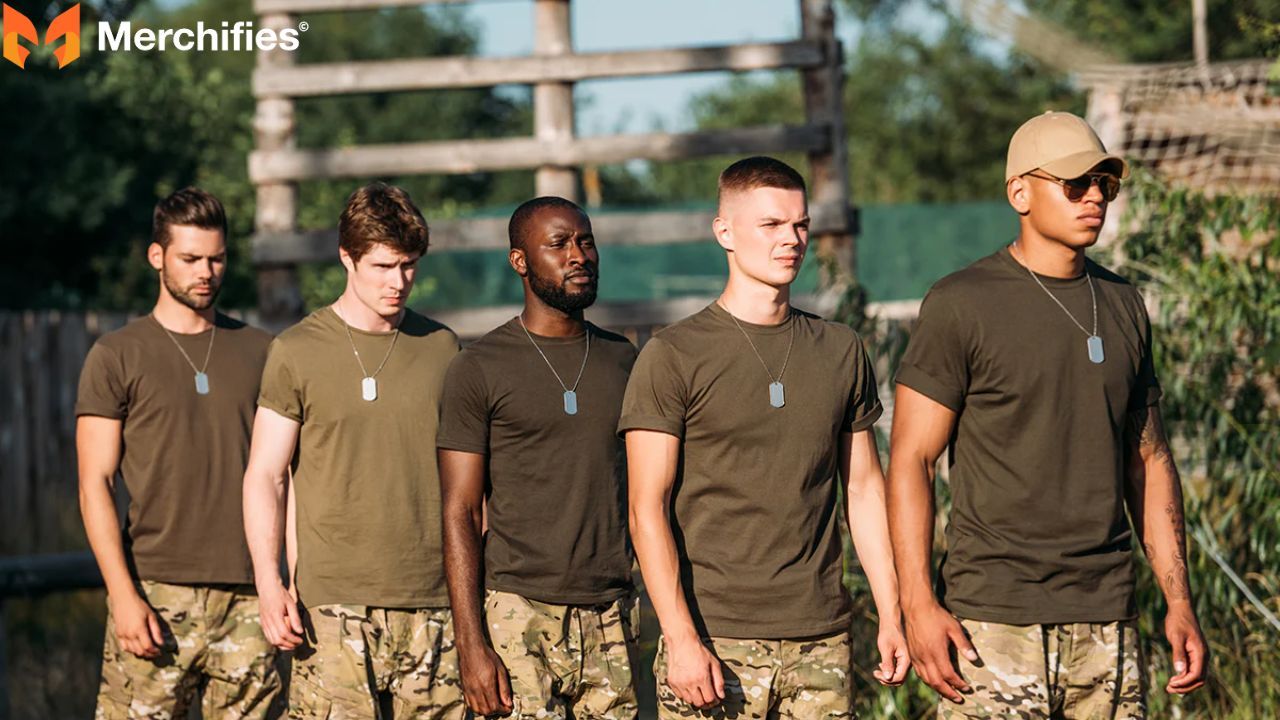
World War I expanded t-shirt use across all military branches. Millions of American soldiers received t-shirts as mandatory uniform components. However, civilians still viewed them strictly as underwear.
WWII Changes Everything
World War II required clothing for 16 million Americans in uniform. Every service member received multiple t-shirts, creating unprecedented production scale.
Soldiers deployed to Pacific islands and Mediterranean regions wore t-shirts visibly in hot climates. This normalized t-shirts as outerwear within military context, though civilian society still considered them inappropriate underwear.
Veterans returned home with strong t-shirt habits. Unlike previous generations, these men had worn t-shirts as outer garments overseas. They were comfortable with visible t-shirt wearing in ways earlier veterans weren't.
This set the stage for the first major transformation in the history of military t-shirts
First Transformation: From Underwear to Acceptable Wear (1945-1955)
The Post-War Clothing Crisis
WWII ended with severe civilian clothing shortages. Manufacturers could produce only 12 million suits annually versus normal production of 24 million. Half the demand went completely unmet.
White shirts became so scarce that men joked about needing appointments just to try buying one. Department stores that normally stocked thousands of suits might have only 150 total.
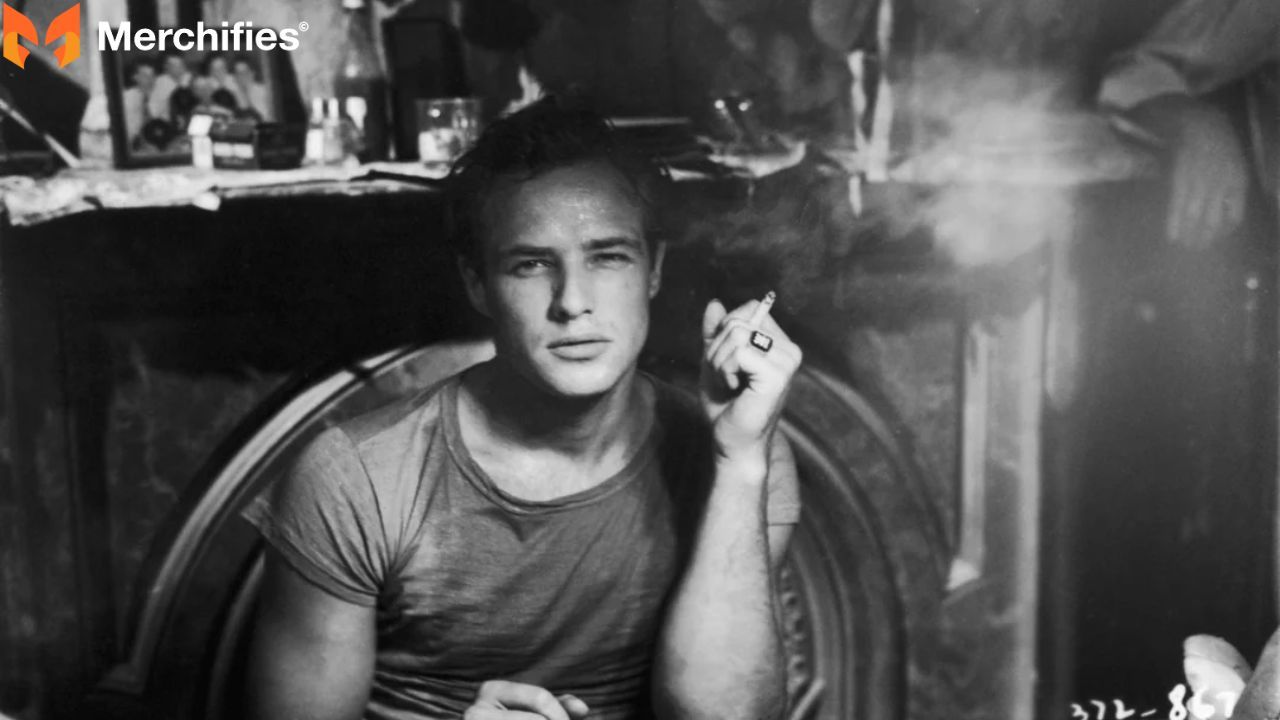
Veterans literally couldn't find civilian clothes to purchase at any reasonable price. This necessity forced millions to continue wearing military t-shirts and other uniform pieces.
When millions of people wear something out of necessity, social norms shift. What was inappropriate underwear became acceptable because the alternative was going shirtless or wearing expensive unavailable civilian clothing.
College Campuses Become Fashion Laboratories
The GI Bill opened college to 8 million veterans in seven years. These veteran students brought military clothing to campuses where suits and ties had been standard.
Campus newspapers documented the invasion of khakis, field jackets, and t-shirts. Some mocked veterans for casual attire. Others offered practical advice: "Dye your khaki pants blue or brown to look less military."
A 1947 article about Indiana University noted the contrast: "A boy who doesn't have to shave yet sits next to a man who helped tear Europe apart. The student in the Army field jacket wonders what this lesson has to do with his future."
This necessity phase (1945-1955) permanently normalized military clothing in civilian life. How military shirts became popular began with millions having no other affordable option.
Army Surplus Stores Transform Availability
WWII created unprecedented military surplus. Government auctions sold massive stockpiles to entrepreneurs who opened Army-Navy surplus stores in every city and college town.
Students could buy military t-shirts, field jackets, and cargo pants for dollars. A complete fatigue outfit cost just $2 according to University of Texas students.
This availability severed the connection between military service and military clothing. Anyone could wear military fashion regardless of whether they'd served. The origin of veteran shirts as civilian fashion was complete.
Second Transformation: Hollywood Creates Desire (1950s-1960s)
From Acceptable to Desirable
Marlon Brando changed everything in 1951. His tight-fitting white t-shirt in "A Streetcar Named Desire" made t-shirts symbols of raw masculinity and rebellion. T-shirt sales spiked nationwide as men wanted Brando's image.
James Dean cemented this shift with "Rebel Without a Cause" in 1955. His white t-shirt and jeans became the uniform of youthful rebellion against conformity. Together, these Hollywood icons transformed t-shirts from practical wear into fashion statements within just four years.
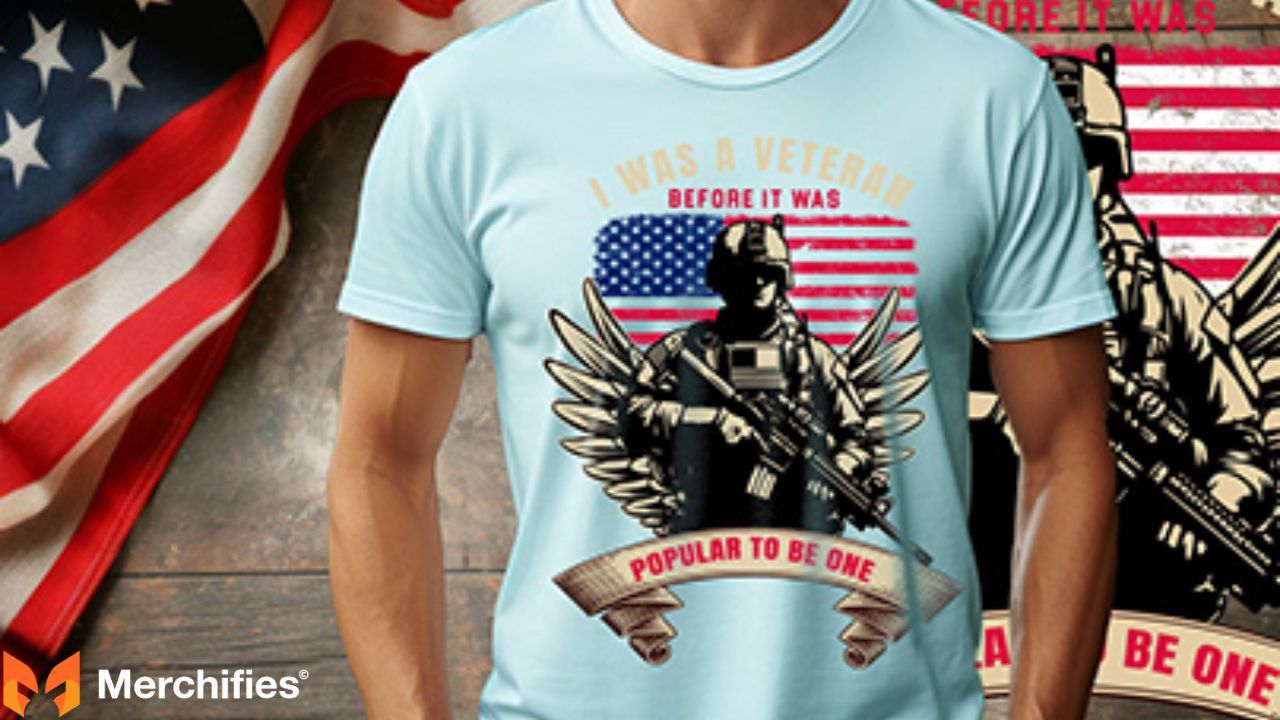
Military surplus evolved similarly. By the 1960s, surplus stores attracted everyone seeking affordable, durable clothing. Women joined men in buying military gear. Fashion executives visited college campuses to observe surplus trends influencing youth culture.
The transformation from necessity to desire added emotional meaning to functional military clothing. T-shirts now symbolized individuality, rebellion, and working-class authenticity.
Third Transformation: Counterculture Symbolism (1960s-1970s)
The Vietnam War created contradictory meanings for military clothing. Veterans wore uniforms "in defiance" of unwelcoming attitudes, expressing pride despite societal rejection.
Simultaneously, anti-war protesters adopted military surplus as their counterculture uniform. By 1968, army field jackets appeared at virtually every campus protest. Students created surreal moments wearing surplus while protesting against the military.
This appropriation was intentionally subversive. Protesters took military authority symbols and wore them while opposing that authority. The same field jacket could express veteran pride or anti-war rebellion depending on the wearer.
Tom Wolfe noted in 1970 that "Late Army Surplus" dominated Yale's campus style. Military clothing had become the uniform of student movements, stripped of patriotic context and repurposed for rebellion.
This phase shows the history of military t-shirts as cultural communication. Clothing carries meanings beyond function—it signals values, affiliations, and political positions.
Fourth Transformation: Mainstream Fashion (1970s-Present)
Commercial Discovery
The 1970s brought military aesthetics into mainstream fashion. Ralph Lauren, Banana Republic, and The Gap created military-inspired collections for suburban consumers who'd never visit surplus stores.
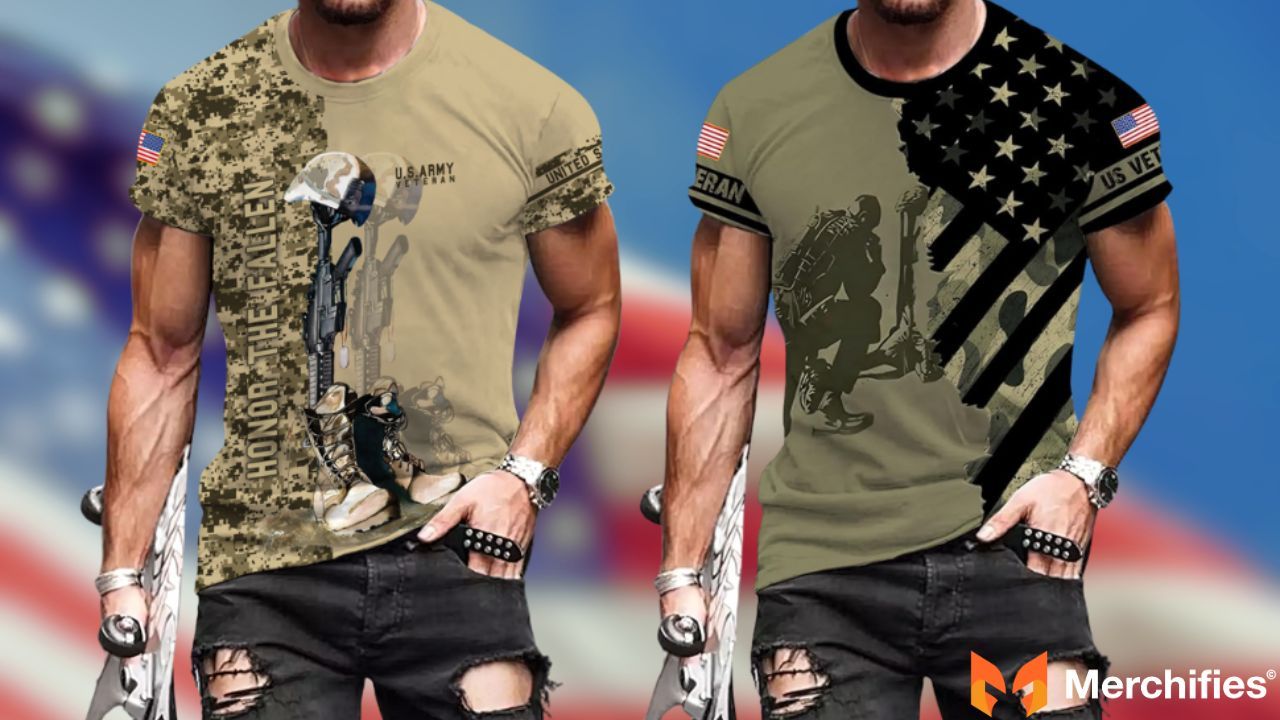
The New York Times declared "Surplus Chic" official fashion in 1974. Designer versions often cost more than authentic surplus—wealthy customers paid premium prices for expensive interpretations of originally cheap military clothing.
Military fashion had been completely stripped of original contexts. No longer connected to service, necessity, budgets, or rebellion, military aesthetics became pure style available at every price point.
Technology and Innovation
Modern military shirts bear little resemblance to 1905 Navy undershirts beyond basic shape. Synthetic fabrics replaced cotton, offering moisture-wicking and durability. Special forces drove innovations in camouflage, reinforced construction, and modular designs.
Civilian tactical brands emerged serving both military professionals and civilian enthusiasts. Companies like 5.11 Tactical recognized that military-grade quality appealed far beyond military markets.
Today's tactical shirts feature ripstop fabric, ventilation panels, integrated padding pockets, and performance exceeding military specifications. Technology transformed simple undershirts into sophisticated technical garments.
Veteran-Owned Brands
The 21st century brought explosion of veteran-owned companies offering patriotic t-shirts with flags, branch logos, and unit imagery. These businesses understand military culture authentically while supporting veteran entrepreneurship.
Military-themed apparel allows veterans to maintain service connections and helps family members honor relatives' service. This emotional dimension ensures military fashion remains personally meaningful beyond trends.
Why Military Shirts Endure
Unmatched Functionality
Military clothing prioritizes function over appearance. Pockets placed for actual use, reinforced construction, and durable materials serve real needs that civilian fashion often ignores.
Moisture-wicking properties, weather-appropriate designs, and comfortable fabrics make military shirts practical for outdoor activities, manual labor, and casual wear. If clothing keeps soldiers comfortable in extreme conditions, it works for civilian needs.
This functional superiority explains lasting popularity beyond trends. Military shirts solve practical problems better than most civilian alternatives.
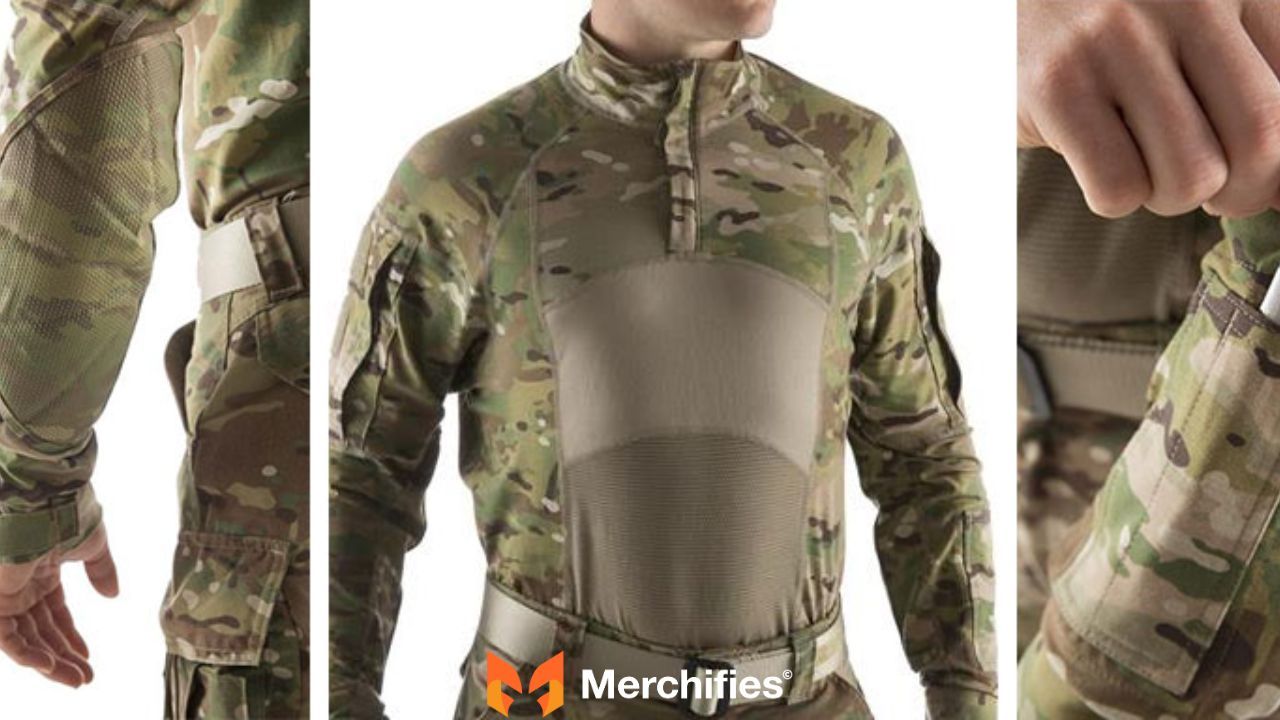
Cultural Symbolism
Military clothing carries meanings beyond practical function. For some, it expresses patriotism and military appreciation. For others, it signals outdoor lifestyle, tactical preparedness, or functional design appreciation.
Different groups adopted military fashion at different times for different reasons. Veterans maintain service connections. Students sought affordability. Rebels expressed counterculture values. Fashion followers embrace aesthetic trends.
Personal military connection motivates many wearers. Veterans maintain ties through military clothing. Family members honor relatives' service through branch-specific apparel. This emotional connection ensures continued relevance.
Accessibility and Affordability
Military surplus remains remarkably affordable compared to civilian alternatives. The durability means military clothing often outlasts civilian options despite costing less initially.
Availability at all price points—from authentic surplus to designer interpretations—democratizes military fashion. Anyone can participate regardless of budget, ensuring broad market appeal.
The combination of quality, durability, and affordability creates unbeatable value proposition that sustains demand across economic conditions and fashion cycles.
Fashion Industry Support
Designer adoption of military aesthetics legitimizes and amplifies military fashion. When high-end brands create military-inspired collections, mainstream consumers feel permission to wear military styles.
Celebrity endorsements make military fashion desirable beyond practical considerations. Mass market availability ensures everyone can access military-style clothing at their preferred price point.
Continuous trend cycling keeps military fashion perpetually relevant. Every few years, designers "rediscover" military aesthetics, introducing military fashion to new generations who adopt it as their own.
The Enduring Significance of Military t-shirts
The history of military t-shirts demonstrates functional necessity transforming into lasting cultural phenomenon. Each transformation added meaning without erasing previous significance.
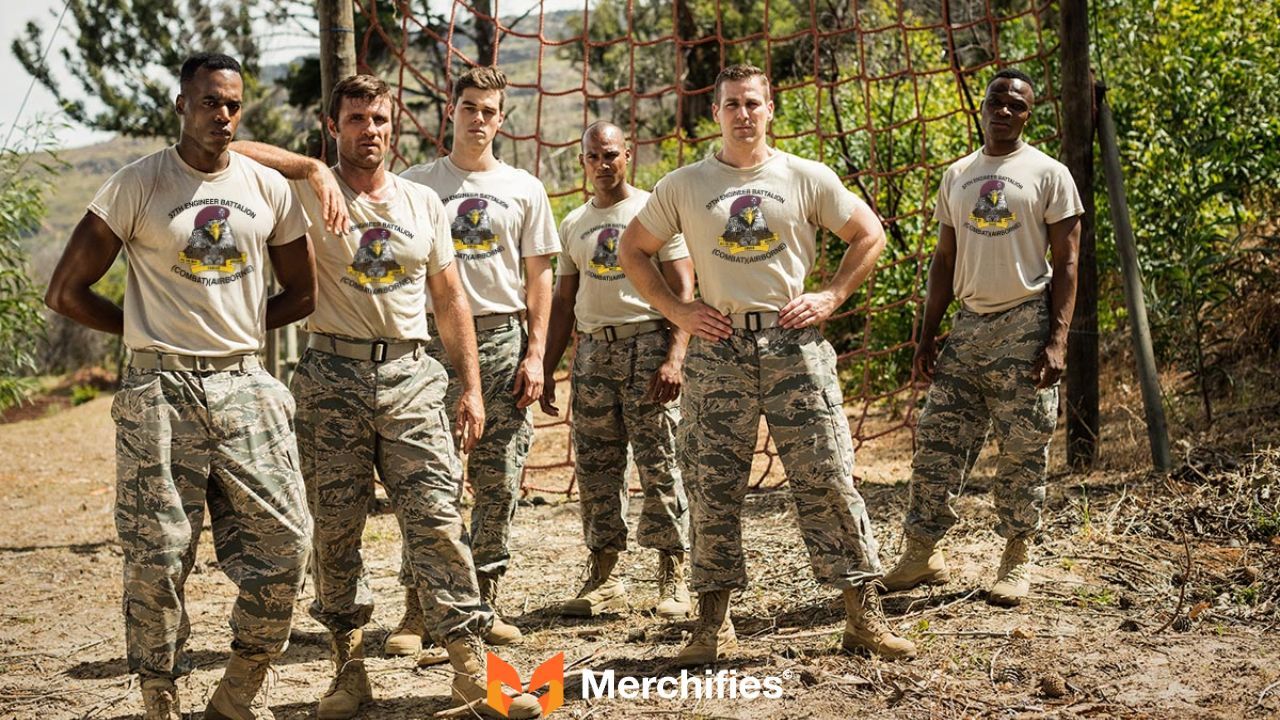
Military t-shirts simultaneously represent practical military origins, veteran necessity, rebellious youth culture, and mainstream fashion. This layered complexity ensures continued relevance across diverse audiences.
Understanding the origin of veteran shirts reveals how clothing communicates identity, values, and belonging. Simple garments carry rich histories connecting wearers to military heritage, cultural movements, and personal expression.
How military shirts became popular involved necessity creating acceptance, Hollywood creating desire, counterculture creating symbolism, and fashion industry creating accessibility. Each phase built on previous foundations.
Today's military fashion honors this transformation journey while embracing innovation. Whether authentic surplus, tactical gear, or fashion interpretation, military shirts remain globally popular because they balance function, meaning, and style.
The enduring significance lies in adaptability. Military clothing evolves with changing contexts while maintaining core values: durability, functionality, and authentic connection to military heritage. This balance ensures military fashion will continue thriving for generations to come.
Frequently Asked Questions
When did military t-shirts first appear?
The U.S. Navy adopted t-shirts in 1905 and standardized them by 1913 as white cotton crew-neck undershirts for sailors.
How did military t-shirts become civilian fashion?
Post-WWII clothing shortages forced veterans to wear military t-shirts publicly (1945-1950). When millions wore them out of necessity, t-shirts became socially acceptable outerwear.
Why were t-shirts considered inappropriate before WWII?
T-shirts were classified as underwear. Social norms prohibited wearing visible undergarments publicly until WWII veterans normalized the practice.
What made t-shirts suddenly fashionable?
Marlon Brando (1951) and James Dean (1955) wore t-shirts in iconic films, transforming them from acceptable wear into symbols of masculine rebellion and youth culture.
What makes modern military shirts different from originals?
Modern tactical shirts use synthetic moisture-wicking fabrics, feature reinforced stitching, sophisticated camouflage, modular attachment systems, and exceed original military performance specifications.
Why does military fashion remain popular today?
Military clothing combines superior functionality, layered cultural meanings, universal accessibility at all price points, and continuous fashion industry support—ensuring lasting relevance.